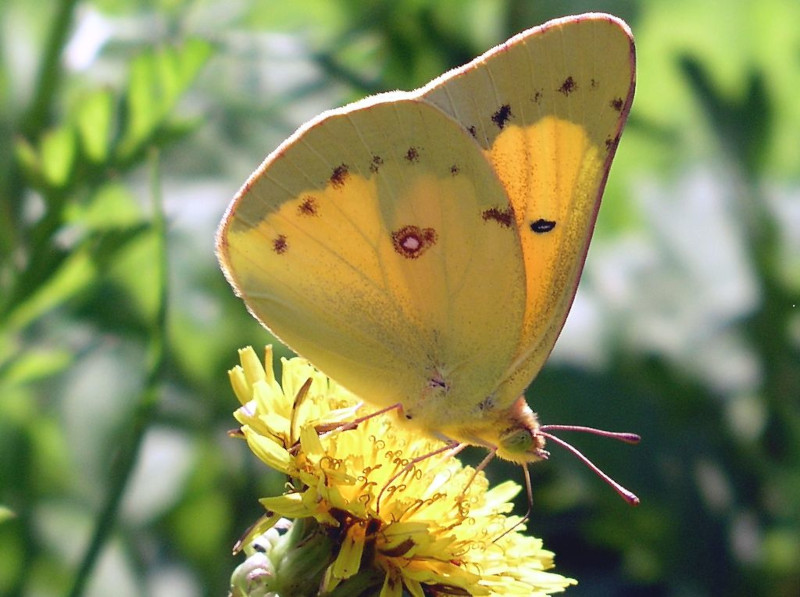The Clouded Sulphur Butterfly looks like a little bundle of yellow cotton, doesn’t it? But they also have a dark secret. This little Beauty also seems to be a bit of a Beast. You see, this species actually displays the extremely unusual trait of cannibalism among the freshly hatched larvae.
This delicately beautiful little creature remains a species of Lepidoptera with an extensive range of habitation. They exist in Alaska, parts of Canada, and most the United States. This butterfly species appears present in such numbers that it has consequently been classified as a species of Least Concern by the IUCN.
The Clouded Sulphur Butterfly also reproduces prolifically, taking as many as four mating flights in a single season. This lovely insect feeds on the nectar of several species of plants. The Clouded Sulphur Butterfly primarily feeds on coneflower, milkweed, alfalfa, and several species of clover.
During the spring, they frequently appear congregating by the thousands in fields, in many parts of their endemic range. Just imagine a field of yellow, fluttering in the breeze.
Clouded Sulphur Butterfly Physical Description and Ecology
The Clouded Sulphur Butterfly typically attains a wingspan of approximately 2 in (5 cm). The wings are predominantly a bright yellow in color. How this must stand out among fields of green.
The males display a thin solid black border along the edge of the wings. In the female Clouded Sulphur Butterfly, this border is composed of small black dots. On rare occasions, the female of the species will be an off-white in color.
This species is most commonly found in meadows, fields, and roadsides. They also so often congregate in large numbers around puddles of water, after it rains.
The Clouded Sulphur Butterfly lays numerous eggs after mating (perhaps their only defense is to outbreed their predators). This species does possess the unusual trait of cannibalism among the newly hatched larvae.
Check out our other articles on 3 Wonderful Woody Shrubs of Australia, Aye-aye, Great Dismal Swamp, Black Witches’ Butter, Stubby Squid, Hellbender Salamander, Rainbow Snake

